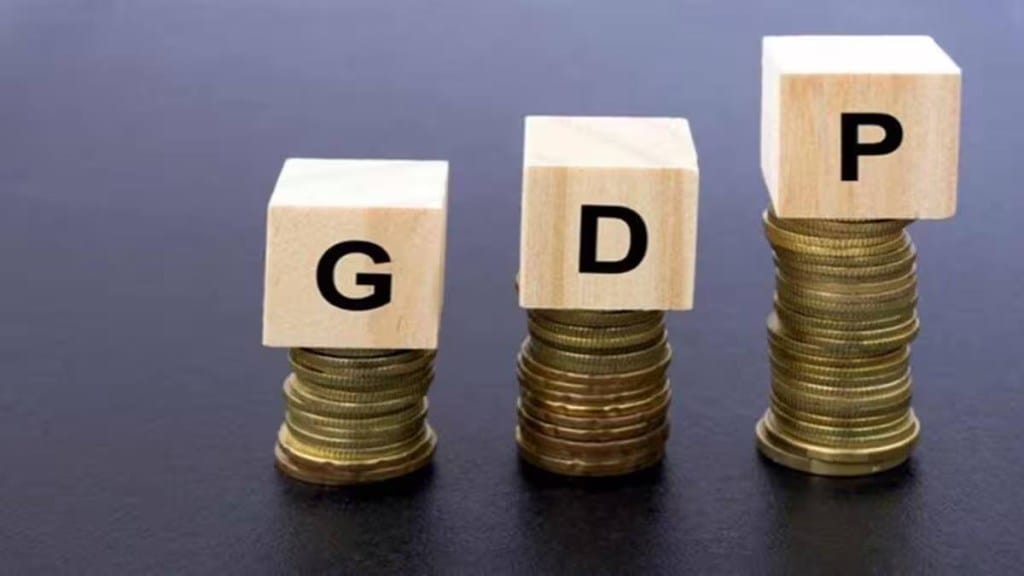By Atanu Biswas
Whether you like to quote GDP or per capita GDP to illustrate the nature of growth in a country, there’s little doubt that this artificial, abstract, complex, but exceedingly important statistic, GDP, serves as a driving force in today’s world. Mathematically, GDP is the sum of consumption, investment, and government spending (plus exports, minus imports). Cambridge professor Diane Coyle’s 2016 book GDP: A Brief but Affectionate History chronicles the history of the development of GDP from its eighteenth- and nineteenth-century forebears through its invention in the 1940s following the devastation of the Great Depression and World War II and then through its postwar golden age and the Great Crash up to the present time.
In fact, economist Simon Kuznets, who’d get the Nobel Prize later in 1971, sought to encompass all economic production by individuals, companies, and the government in a single measure that would rise in prosperous times and fall in tough ones. Possibly because it displays a single headline figure in a deceptively easy format, GDP has continued to rule the world. It’s easy to use for comparisons, too. GDP remained central to our lives and lifestyles over decades, mostly unscathed; Nobel laureate American economist Robert Solow even said in 1987: “You can see the computer age everywhere but in the productivity statistics.”
In reality, using GDP to measure people’s well-being has many limitations. We know that a tiny group of wealthy people have had a significant impact on GDP values. Additionally, the GDP ignores many important aspects of society and daily life, such as pandemics, war, environmental pollution, social crime, and even traffic congestion. While different economies are recovering in the post-Covid era, the GDP doesn’t show how their underlying inequities are likewise intensifying. When calculating GDP, the contributions of unpaid workers are also not taken into account. A 2011 OECD study, for example, found that so-called “home production” would boost the GDP of its member countries by 20% to 50%.
According to Jennifer Blanke, economist at the World Economic Forum, “GDP is a partial, short-term measure, whereas the world needs more wide-ranging and responsible instruments to inform the way we build the economies of the future.” Blanke mentioned three key questions that GDP overlooks: whether growth is fair, green, and improving our lives.
Why is it important to fix how we measure growth? This is because increasing GDP is the central goal of the policies adopted by most countries. That is unavoidable too. The book by Diane Coyle illustrates how even minor changes in GDP can affect significant political decisions, decide elections, and determine whether a country can continue to borrow money or enter a recession. Moreover, as Joseph Stiglitz put it, “What we measure informs what we do. And if we’re measuring the wrong thing, we’re going to do the wrong thing.” Thus, many think that we need to find a new measure to assess the health of our economies and, more importantly, the people living in them.
The method used to calculate the GDP has further flaws. The Bureau of Economic Advisors (BEA) in America changed the way they computed GDP in the middle of 2013, and the American economy expanded by 3% overnight. In 2010, Ghana switched its base year from 1993 to 2006, which caused its GDP to increase by 60% and promoted it from a low to a lower-middle income country. Similarly, when Nigeria “rebased” its GDP figures in 2014, its GDP surged by 89% all at once, pushing it past South Africa to become Africa’s largest economy without taking any additional action!
Overall, GDP is finding it difficult to remain relevant as the business landscape reinvents itself, demographics shift, inequality rises, climate change worsens, and technology continues to grow at a dizzying pace. So, is the global adoration of GDP coming to an end?
Over the past two decades, there has been a clear demand from decision-makers, governments, academia, and the general public to expand the statistical measuring framework beyond GDP, which largely concentrates on economic performance. Additionally, a number of high-profile commissions and research projects have been established to examine how we can measure welfare.
In an effort to create a “suitable” alternative for GDP, then-French president Nicholas Sarkozy assembled a prominent 20-person committee in 2008 led by Amartya Sen, Joseph Stiglitz, and Jean-Paul Fitoussi. The committee pushed for an end to “GDP fetishism.” It was argued that there are many different aspects of well-being, such as material living standards, health, education, personal activities, political, social, and environmental factors, and insecurity. In 2018, the OECD published a report based on the work of a follow-up commission headed by Joseph Stiglitz, Jean-Paul Fitoussi, and OECD chief statistician Martine Durand. The group recommended to create a dashboard of indicators that go beyond GDP and provide a more multifaceted picture of a nation’s quality of life. In his Our Common Agenda report from 2021, the UN secretary-general also stated that “we must urgently find measures of progress that complement GDP, as we were tasked to do by 2030.” And this February, the United Nations Statistical Commission also discussed statistical measures “beyond GDP.” Therefore, there’s a definite global trend against the use of GDP as a single measure of economic and social welfare. The conclusion of Diane Coyle’s book makes the case that while GDP was a useful measure for the twentieth century, it’s becoming increasingly inappropriate for a twenty-first-century economy driven by innovation, services, and intangible goods.
Would it be possible to expand the statistical measurement framework beyond GDP eventually? Or would GDP continue to dominate our lives and lifestyles?
Atanu Biswas, Professor of statistics, Indian Statistical Institute, Kolkata. Views are personal.

